‘Either the tracker had dropped, or he was dead’: The curious case of Cachou the bear
When Cachou the bear was killed, authorities and conservationists wanted answers – but the case wouldn’t be easy to solve, writes Laura Millan Lombrana
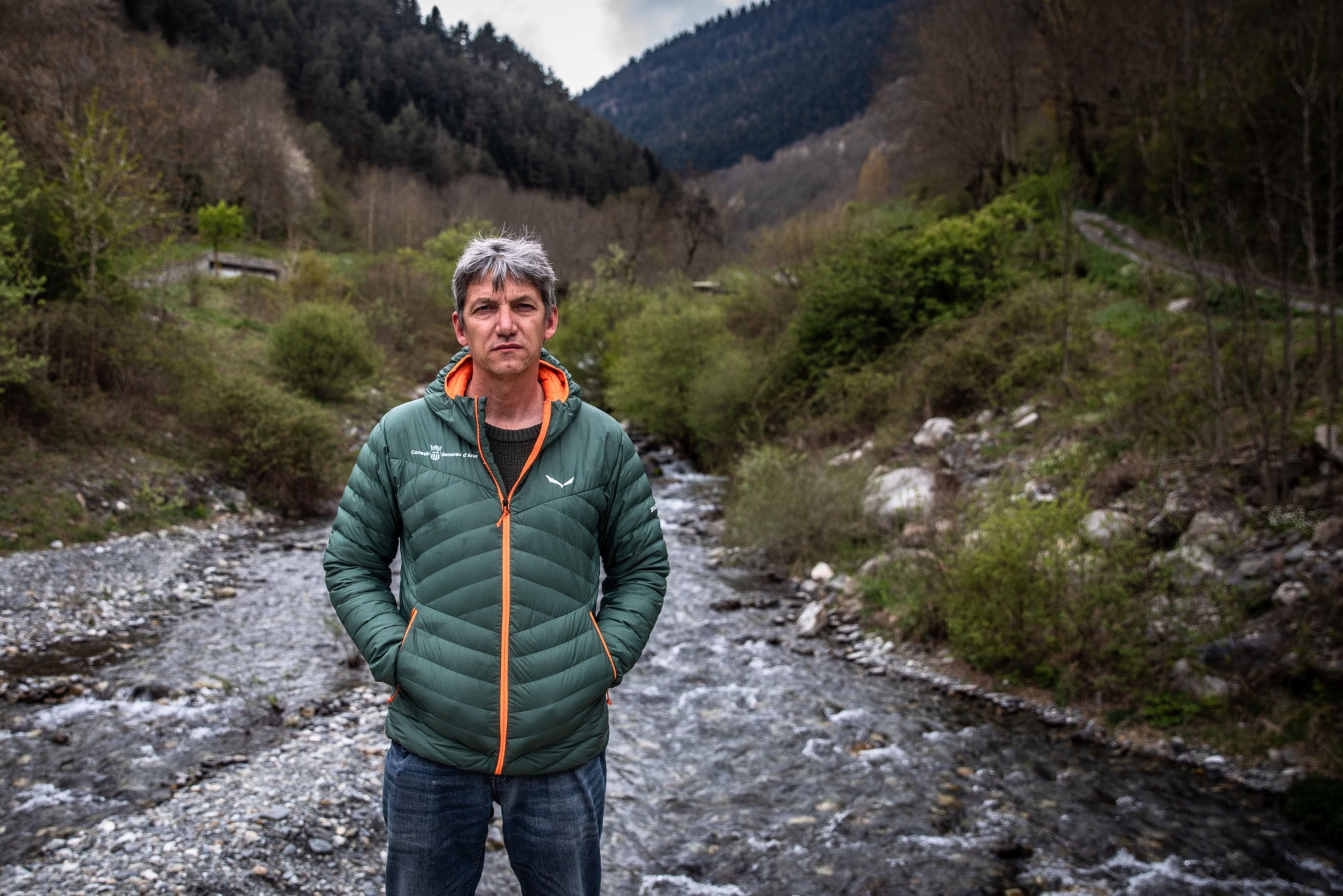
Ivan Afonso checked his computer one last time before picking up the phone. It was April 2020, and like most of Spain, Afonso was stuck at home under a strict Covid lockdown. But his mind was in the mountains.
An environmental scientist, Afonso also served as head of the environmental division in the Aran Valley, a tiny area of the Pyrenees mountain range that forms a dent along Spain’s border with France. For the past three years, his duties had included monitoring the movements of Cachou, a six-year-old, 130kg brown bear. The bear was a local celebrity, one of the few males born in the wild in the Pyrenees and living proof that conservationists’ efforts to rejuvenate the region’s struggling brown bear colony were working.
The task had been a nightmare from the start. Cachou was young and fiery, and – to the dismay of conservationists and farmers – prone to wreaking havoc. Like most bears, Cachou had a sweet tooth. He’d started with assaulting bee farms, but by 2019, he’d learned to hunt horses many times his size. Eventually, authorities put a tracker on him, but even that didn’t work. At one point, he was blamed for four attacks within two weeks.
Cachou had given Afonso and horse breeders in the valley some rest during the winter. But the tracker showed the bear had come out of hibernation earlier than usual. He’d been in France in March, but a more recent ping put him somewhere in the mountains above Les, a tiny village of fewer than 1,000 people. After that, he’d ventured deeper into the forest, close to a trail – and then stopped.
The next 24 pings were all in the same spot. Afonso couldn’t shake the feeling that something was wrong. “Either the tracker had dropped, or he was dead,” he thought.
In light of the vast extinction event currently underway on Earth, the death of a single bear might seem less than significant. And yet, on the morning of 9 April 2020, Afonso decided it was time to do something. He called the head of Aran Valley’s government first, then dialled the valley’s ranger corps and requested two trustworthy agents who could discreetly hike to the place the pings were coming from.
Finally, he dialled the head of Catalonia’s park ranger corps in the northern Pyrenees, Anna Servent. Spry and in her early forties, with a resolute expression and brown hair cut short on one side, Servent heads a small, semi-secret team of investigators who specialise in animal poisonings. Their methods are unconventional. While most rangers focus on analysing animal remains, the people on Servent’s team spend years building networks of local informers. They wear plainclothes, change vehicles often, and tend to visit their sources in the middle of the night to avoid drawing attention.
It pained Afonso not to be able to go out into the mountains to find Cachou, but he had reason to believe that the rangers would be walking into a crime scene
By the turn of the 21st century, brown bears were almost extinct in the Pyrenees after decades of indiscriminate hunting and poisoning. In 1996, just three survived in the entire 430km mountain range. While the population has recovered after several European Union-sponsored conservation projects, it remains Europe’s smallest colony, with a count of 64 bears as of 2020. The lower Aran Valley, with its thick forests covered in old beech, oak, and chestnut trees and a milder climate, has become a breeding ground for the endangered predators.
But what conservationists consider a victory, many who’ve grown up in the mountains see as a declaration of war. “Naturally, when you reintroduce a species that has been previously eliminated on purpose, you’ll run again into similar conflicts that caused the reduction in numbers in the first place,” says Elisabeth Pötzelsberger, the head of the resilience programme at the European Forest Institute, an EU research centre. “It would be quite naive to think everyone will be happy and clapping hands.”
After talking to Afonso, Servent and one of her investigators – whose identity can’t be revealed to avoid compromising ongoing cases – jumped in a car and drove fast through deserted, meandering roads into the Aran Valley. The view on the way in is bucolic, with rocky peaks covered in snow and slopes so steep one fears they might collapse onto the bright green pastures below. The stone towers and slate roofs of Romanic churches dot the expanse, which is split in two by the Garonne river. Those who live there still speak a modern version of Occitan, a romance language troubadours used for songs and poems before the Renaissance. They’re proud of their rural roots and tend to look suspiciously at anyone coming from south of the Pyrenees.
The Aran Valley community is so tight, Servent’s rangers hadn’t been able to groom informants in the area, so she hoped their car would go unnoticed as she and her teammate neared Les. They headed up the mountain trail, climbed through the steep forest, and reached Cachou’s body at roughly the same time as the local rangers.
The bear was lying belly up at the bottom of a 40-metre rocky cliff, a single canine sticking out of his half-open mouth. There were signs he’d been there for a long time, but that the death was quite recent, indicating that he could have lay there suffering, which happens sometimes in poisoning cases.
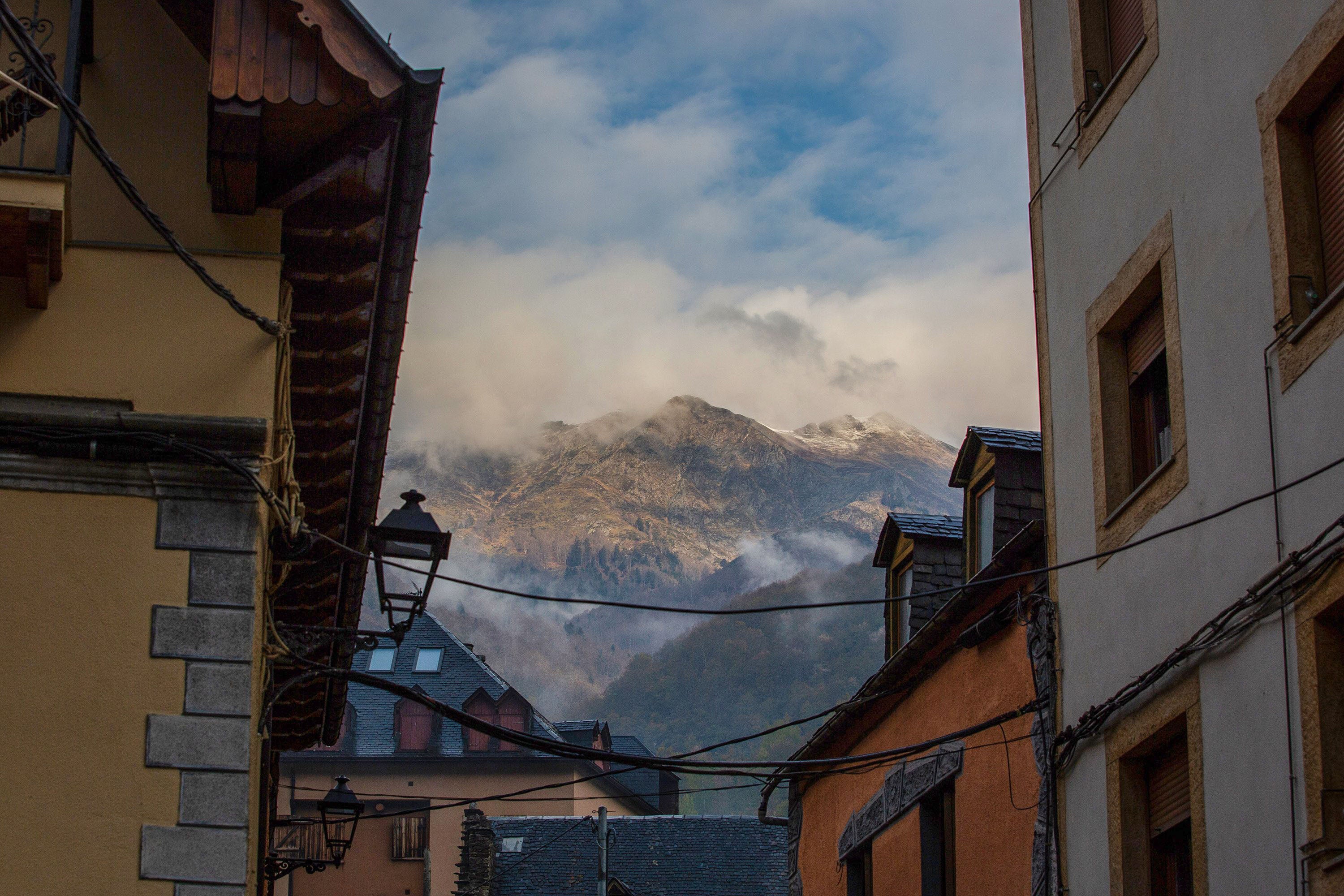
Servent speaks in a low voice and a calm tone as she details their inspection of the body and the surrounding area, but her face is serious behind a blue surgical mask. “We didn’t see any signs of poisoning initially,” she says. That made them even more restless. Before they left, Afonso had told them: “If you don’t find an obvious cause of death, look for antifreeze.”
Ivan Afonso likes to think of himself as a man between two worlds. He was born of the Pyrenees, but not of the Aran Valley, and completed his university degree in cosmopolitan Barcelona. At 47 years old, he still feels more at ease in the mountains looking for endangered birds or scouring remote ponds for rare frogs than he does in his small office in the Aran government’s headquarters.
It pained Afonso not to be able to go out into the mountains to find Cachou, but he had reason to believe that they’d be walking into a crime scene, which meant that the fewer people there disturbing evidence, the better. Twice during 2019, he told Servent’s rangers, he’d overheard a man from Les talk about using antifreeze against bears, according to court documents seen by Bloomberg Green – once during a private meeting, and once during a public speech. This same man had once headed the Aran Valley Land Department and was partially responsible for overseeing €2.4m (£2m) of EU funds intended for brown bear conservation in the Pyrenees.
“I didn’t pay attention to him at that time. Maybe it was a mistake, but I was sceptical,” Afonso says. “There are rumours about killing bears all the time. People boast about having killed a bear and the next day we see it appear on a surveillance camera.”
He goes on: “Even if I had paid attention, what could I have done? Everyone in the valley has antifreeze. I’ve got two bottles at home.”
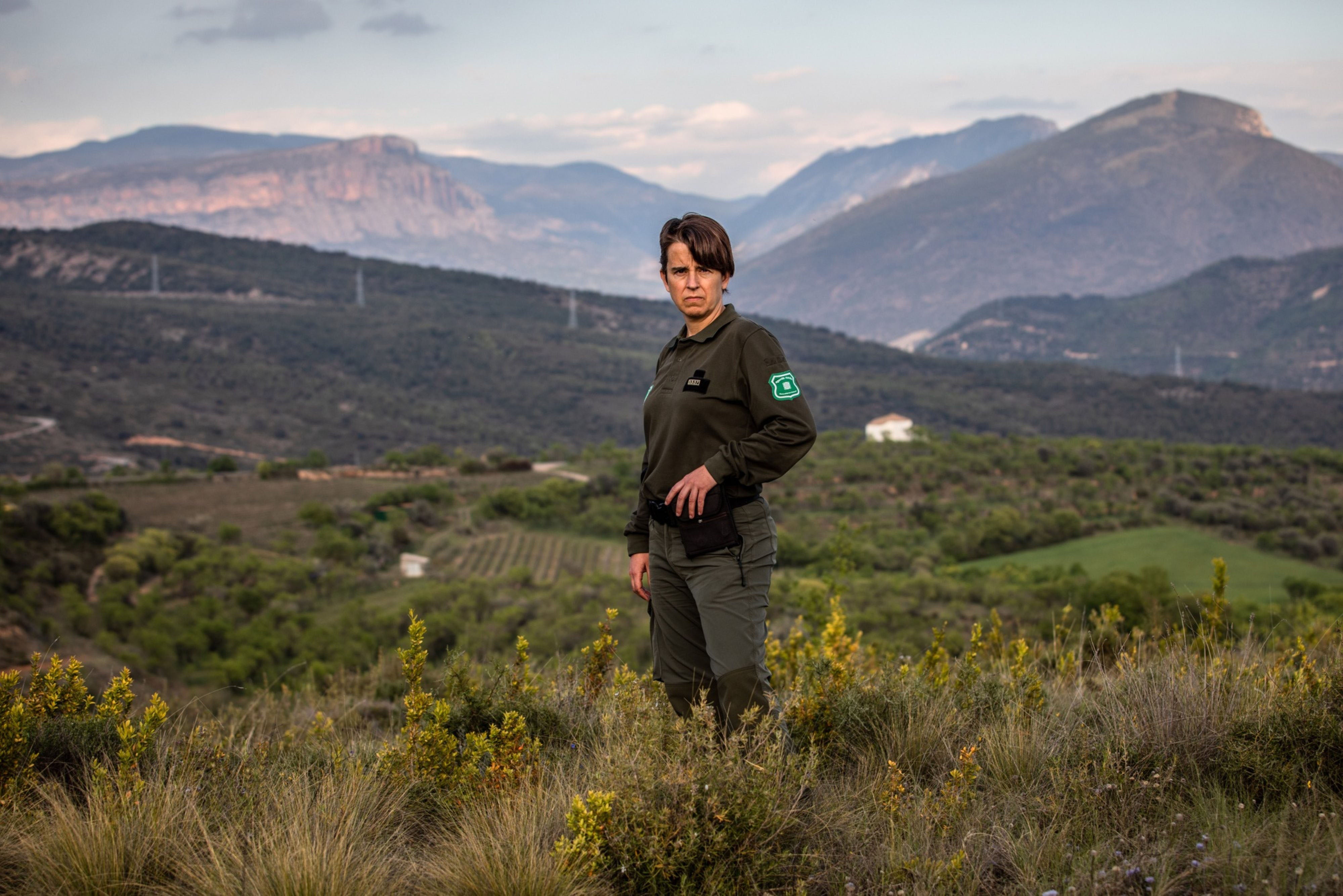
Antifreeze is a ranger’s worst nightmare. Used to prevent car engines from freezing and, therefore, widely available in shops and petrol stations, it goes undetected in common post-mortem tests and vanishes from corpses within days, if not hours. It can only be found if the body is fresh and if pathologists are specifically looking for it.
A few hundred miles from where Cachou’s body was found, wildlife pathologist Roser Velarde was sitting in her office at Universitat Autonoma de Barcelona’s Faculty of Veterinary Medicine, surrounded by microscopes and deer skulls, when she got a call from Afonso, telling her that the bear would be on her operating table by the next day. With 20 years of practice behind her, Velarde didn’t flinch – Cachou’s would hardly be her first animal autopsy, and certainly not her most challenging. Once, much to the amusement of her students and colleagues, she performed a necropsy on a whale on the patio outside because the animal wouldn’t fit inside her lab.
During Cachou’s necropsy, Velarde spoke in the same patient, explanatory tone she uses with her students. The body had no bullet wounds, no broken bones, cuts, or major signs of violence. Some superficial teeth marks on the side of his head suggested that an animal, most likely another bear, had bitten him, but that was ruled out as the cause of death. As she opened him up, she also ruled out death by common poisons, as most cause massive internal bleeding.
Velarde spent four hours cutting, weighing, measuring, gathering samples, and taking pictures, but she found nothing. It wasn’t until after all that that Servent’s investigator, who attended the necropsy, told Velarde about Afonso’s antifreeze suspicion.
Back in her office, Velarde processed samples of urine and brain tissue. Three days later, the university’s head of wildlife eco-pathology confirmed that the samples contained crystals of calcium oxalate, which are consistent with the presence of ethylene glycol, the chemical that comprises between 90 and 95 per cent of antifreeze.
About 12 hours after ingesting the antifreeze, Cachou’s neurological system would have started to malfunction. He would have felt severe stomach irritation and possibly slipped into a coma. His lungs and heart would have started to shut down within hours, but he could have stayed alive for as long as nine days later, until his kidneys finally failed.
Bears were something imposed from Europe, paid with European funds that someone was very happy to collect
“Cachou the bear suffered a slow and very painful agony that went on for days – until he died,” Velarde concluded in her report, according to court documents. That, combined with the signals from the tracking device, meant Cachou was poisoned on or around 26 March.
“The first thing we did was to request the judge to keep the investigation secret,” Servent says – something typically only done in highly sensitive cases such as those involving drug trafficking and political corruption, and never before for the suspected murder of a wild animal. “It terrified us that people would find out and start getting ideas – and obviously, we didn’t want the poisoner to know we knew.” Her request was granted. As a result, details of the investigation haven’t been made public.
With no reliable sources in the area, Servent knew her team’s usual methods wouldn’t work, so she put in a call to the Catalan police, also known as Mossos d’Esquadra.
Deputy inspector Cesar Jou tried to hide his surprise as the voice on the other side of the line told him about his next case. After 25 years as a policeman, most of them on the Mossos’ crime unit in the Pyrenees, he was used to homicides, drug trafficking, and organised violence. But Cachou was his first bear victim. “I was surprised when they asked me to investigate the death of a bear, but we treated it as if it was a homicide. It was a challenge,” he says.
Jou’s first move was to go to Les with his agents and ask locals if they’d seen anything strange in the days around when Cachou was poisoned. In places where everyone knows each other, crime is often seen as an attack on the community as a whole, Jou says. With the country on a strict lockdown, surely someone would have noticed something, he thought.
He was wrong. “No one knew anything, no one had seen anything,” Jou says. Cachou’s killer was perceived as the saviour of the village. “There was a sense of angst among the ranchers.”
Anti-bear sentiment in the region goes back generations. “Living with the bear is an obligation, something we haven’t decided,” says Frances Bruna, the current head of the Land Department in the Aran Valley government. A horse-breeder himself, Bruna talks dearly about his mares and explains that he, too, has suffered bear attacks in the past. “They’ll give us subsidies, aid, they’ll pay back whenever there are attacks. But inside us, there will always be that feeling.”

Bruna’s various responsibilities are often at odds with each other. He’s charged with leading environmental and bear conservation initiatives in the valley, but he also looks after the wellbeing of farmers and their animals. Catalan authorities have spent years trying to mediate between these two worlds. The regional government now compensates ranchers for each animal killed by a bear, and last year spent €84,500 to install fences and pay for shepherds and mastiff dogs to watch over sheep and cattle in the Pyrenees during the summer months. It also pays for the animals’ insurance and has hired an external company that acts as a mediator between farmers and the administration.
“Bears were something imposed from Europe, paid with European funds that, I guess, someone was very happy to collect,” says Marc Cuny, the president of the Association of the Pyrenees Catalan Horse in the Aran Valley. “No one asked for our opinion, they just told us it would be the panacea – and it wasn’t.”
It isn’t a matter of money, says Cuny. Standing in his field next to Ines, Monica and Nera, three of his 16 mares, he keeps a close eye on a filly born just hours ago that his young daughter has named Peppa Pig. Horses are an important part of the valley’s traditions, and breeders’ bond with them is emotional, he says.
“Poisoning the bear was a mistake, and whoever did it wasn’t thinking about the consequences,” Cuny says. “But when a beast kills 12 or 13 horses and is not removed from the mountain, you can understand that someone decided to do it themselves.”
With no cooperation from locals, the investigation into Cachou’s death advanced slowly. Eventually, police identified five potential subjects, including the official who had talked publicly about poisoning bears; a local ranger who was part of the bear restoration programme and had access to Cachou’s positioning data; two people whose phone signals showed they had been in the area around the date of the killing; and one who’d installed a surveillance camera near the place where the body was found.
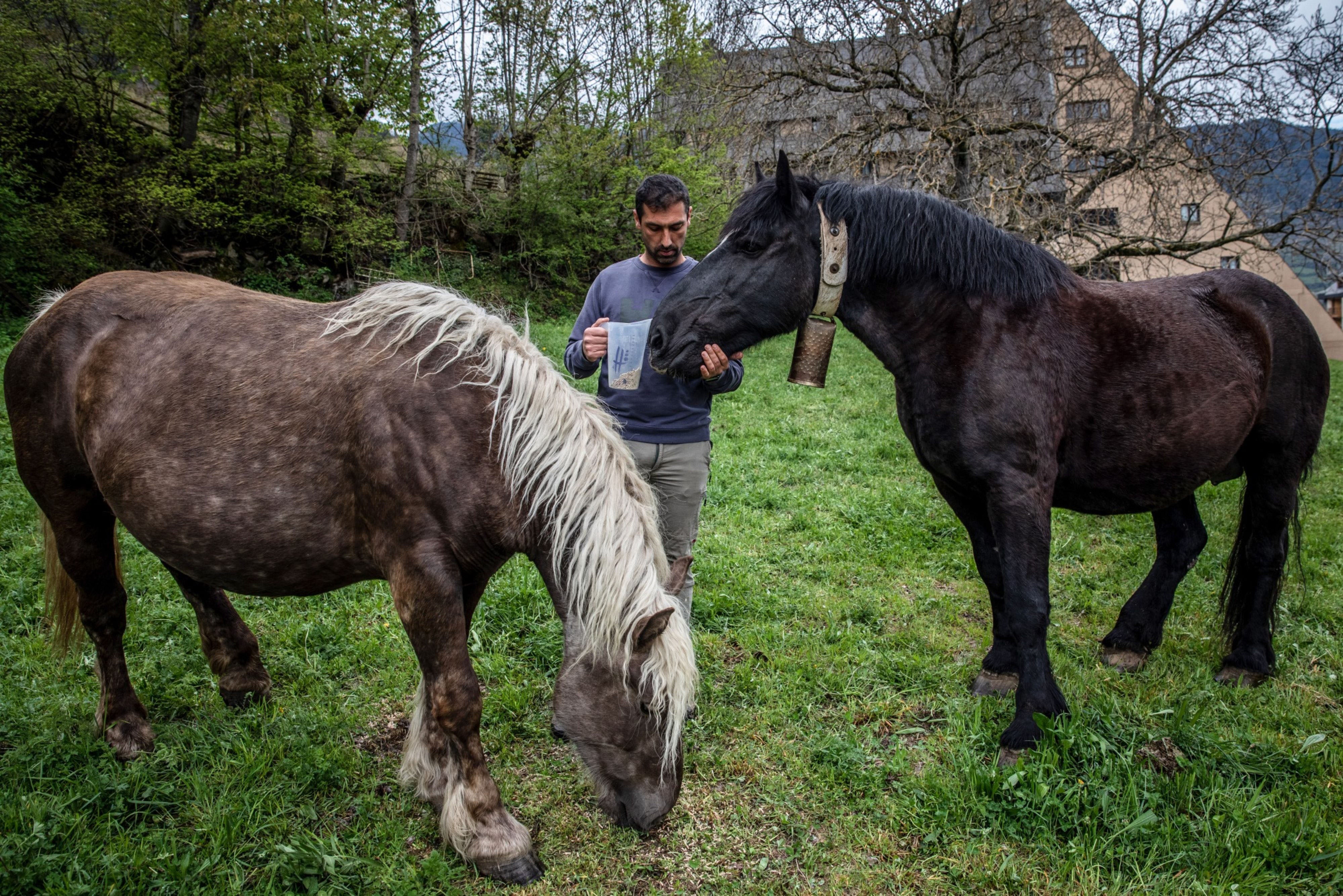
Still, the investigation bore no real clues until the end of June. After weeks of fruitless interrogations, one witness – a ranger with the Aran Valley government – finally broke the code of silence, divulging the existence of a WhatsApp group called, bluntly, the Anti-Bear Platform, according to court documents. All the messages in the chat had been deleted, but Jou’s investigators could see that the group had more than 140 members. Among the administrators was the official who’d talked about poisoning bears.
Jou’s agents had already begun tapping the phones of the suspects they’d identified, but the Anti-Bear Platform gave them the key they needed to begin deciphering how the group operated. In the latter half of 2020, however, the investigation took an unexpected turn. The taps showed a network of people who were changing phone numbers frequently, working in tight shifts in a house in the valley. Some of them had Colombian accents.
On 29 March, Jou’s team arrested 12 people suspected of belonging to a cocaine trafficking ring. Agents seized almost 2kg of pure cocaine worth about €200,000, an unprecedented amount in an area where no one had previously suspected drug-dealing activity of this magnitude. The Aran Valley is famous for the high-end resort of Baqueira, which attracts jet-set skiers and mountain hikers from both sides of the border, including the Spanish royal family, and many now suspect the traffickers were serving its rich patrons.
“We thought it was Cachou’s way of saying ‘thank you’ for having investigated his death,” says Jou jokingly before getting serious again. “It’s been the most important cocaine operation for Mossos d’Esquadra in the Aran Valley for several years.”
More than a year after Cachou’s murder, the investigation is almost complete.
In November, police arrested two of their original five suspects, including the ranger who had access to Cachou’s positioning data and had been caught on a tapped phone discussing the position of a different bear entering the valley. The ranger denied the charges – which included the commission of a crime against fauna, revelation of secrets and perversion of justice – and refused to give a statement. He was eventually released and remains a member of the Aran Valley rangers, although he’s no longer involved in bear-monitoring activities, according to the local government. The judge also summoned the official who’d boasted about antifreeze-soaked sponges, but he, too, refused to give a statement.
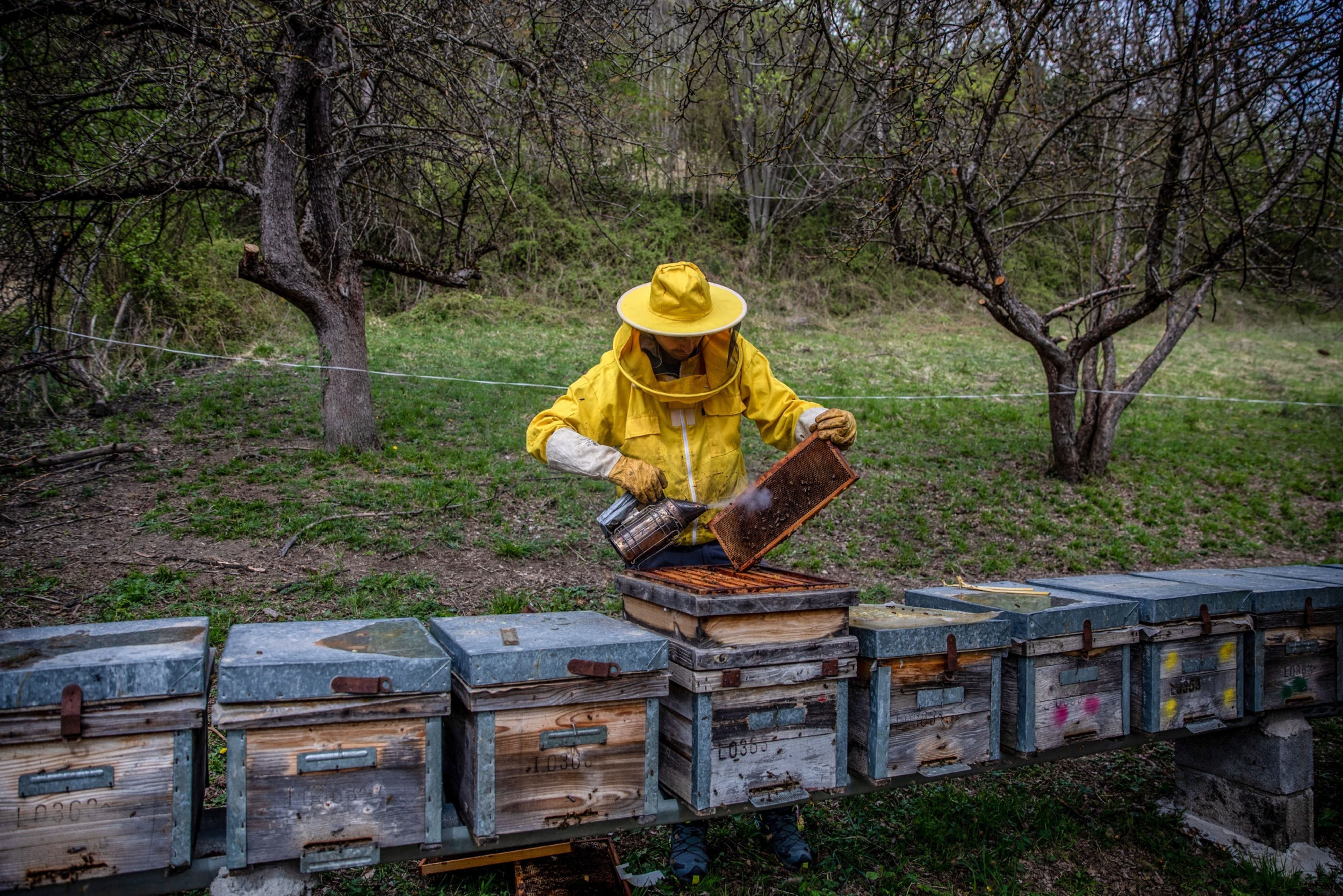
Finally, in early June, police arrested the ranger who’d disclosed the existence of the anti-bear chat. His statements to the police were full of contradictions, and in tapped phone conversations with the other arrested ranger, he’d discussed deleting possibly incriminating messages. He also refused to give a statement and was freed on the same day.
The inquiry into Cachou’s death is the first criminal investigation into the death of a wild animal in Spain, and possibly anywhere else in Europe, environmental groups say. But it’s unlikely to be the last. The EU has made the conservation and restoration of natural habitats, including increasing biodiversity and expanding forests, an essential part of its fight against climate change, wildfires and disease outbreaks.
Wolves, lynx and bears play a key role in that plan. These super-predators are known as umbrella species; because they’re at the top of the food chain, they can only thrive if every other animal and plant below them is healthy too. Their success or failure is, therefore, seen as a proxy for the state of conservation and biodiversity efforts, on which the bloc plans to spend €20 billion a year over the next decade.
The trial could also bring further scrutiny to how European conservation funds are spent. In addition to the former land official who was once in charge of administering this money in the Aran Valley, the ranger who allegedly leaked Cachou’s location was paid entirely by EU conservation funding.
“Aid must come with conditions,” says Joan Vazquez, the founder of conservation organisation Ipcena, which will appear as an individual prosecutor in the trial. “States are not watching how that money is spent, they just send reports to the EU saying everything’s going perfect. And the EU believes it unless there are cases like Cachou’s proving the contrary.”
This is not an isolated case of dubious oversight. A recent report by European nonprofit Bankwatch Network documented biodiversity plans by several Eastern European countries. Analysts found that some, including Bulgaria and Poland, directly infringe current laws, while others engage in greenwashing or other deceptive practices, all while receiving EU funding and applying for more.
In this harsher, more bureaucratic light, Cachou wasn’t just a bear, he was a bellwether. The fact that he was wearing a tracking device – and that Afonso moved fast to locate him – meant rangers got to the scene before his body deteriorated, allowing Velarde to prove the cause of death in a way that would stand up in court. Because of Cachou’s fame and the existing tension between the Aran Valley’s bears and humans, the judge encouraged investigators on the case, including Servent and Jou, to use all means necessary to find the killer.
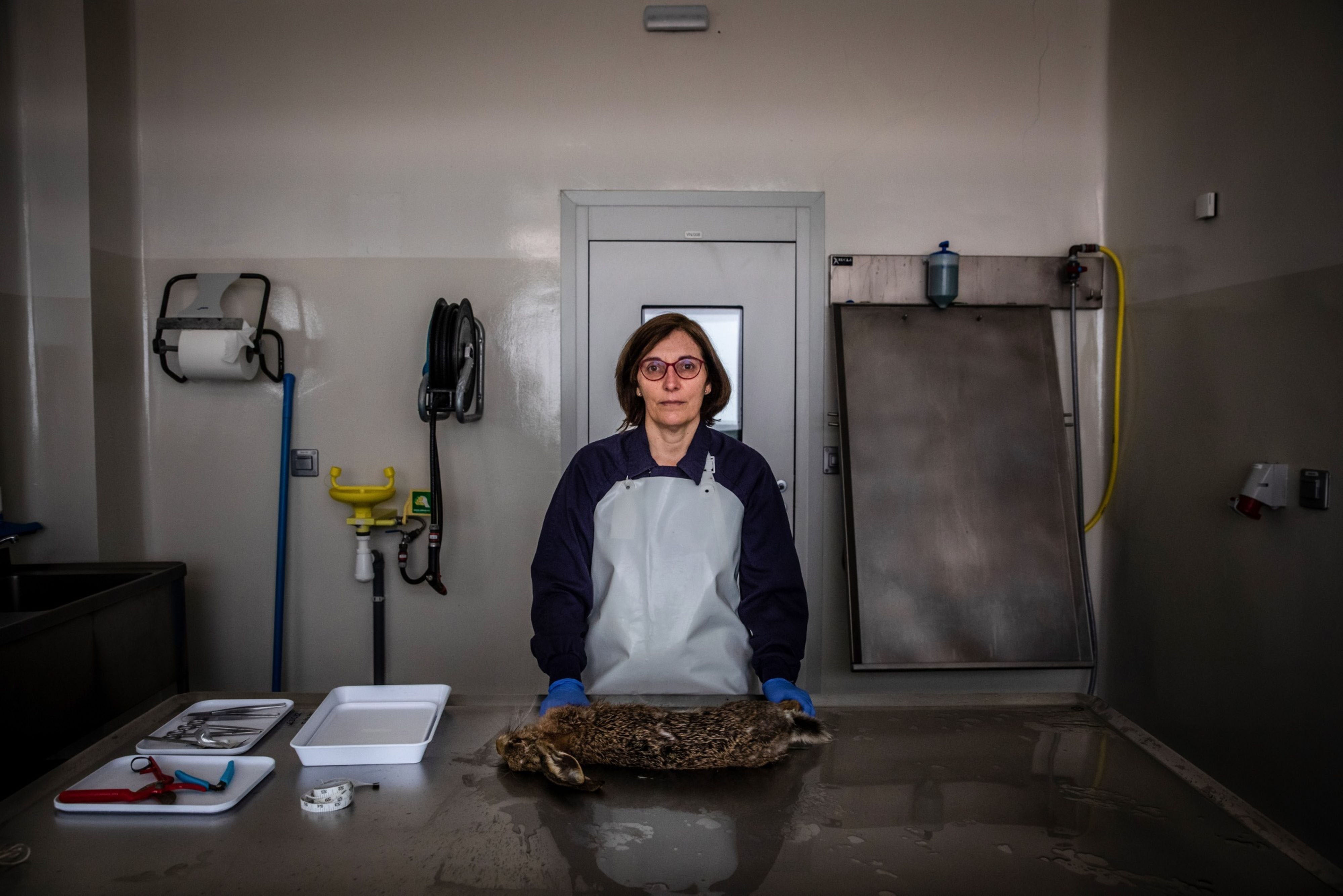
The judge in Vielha, the capital of the Aran Valley, is expected to formally charge the ranger, the public official and potentially others when she closes the investigation, likely within the next few months. At that point, a different judge will bring the case to trial sometime next year in the city of Lleida, about 160km south of the valley. The mystery of Cachou’s death has raised so much attention that authorities fear Vielha’s tiny courthouse won’t be big enough to hold all the interested spectators.
Back in Les, locals await the start of the trial with a mix of uneasiness and indifference. On a foggy morning in April, a few of them read the paper and eat breakfast at an old cafe, casually chatting about whether the end of the lockdown would bring French tourists back. On the wall hang black and white pictures of dead bears and smiling hunters.
“I remember old people in the villages telling us stories about bears,” says Bruna, the current head of the Land Department. “Whoever arrived to the village with a dead bear was hailed as a hero and everyone wanted to be in the picture with them.”
The investigation of Cachou’s murder has done nothing to erase those decades-old lines, Afonso says. Locals who either sympathised with the bears or who didn’t care either way have since turned against them after being summoned to testify, realising their phones were tapped or seeing friends and relatives written about as suspects in the local press. If anything, it’s made the community even warier of strangers.
At base, the case is a clash between two ways of seeing the environment, Afonso says: the Araneses’ pragmatic view of nature as a profitable resource, and the outsider’s more romanticised view of humanity’s duty to protect and preserve.
As for Cachou’s killer, there are different views of who did it. The police and rangers think it was someone from the area who had access to Cachou’s confidential positioning data
“The most extreme examples of these two worlds are represented in this case,” Afonso says. “Very zealous justice and police systems that acted as if a person had been killed, and a wise guy who decided to take matters into his own hands.”
Servent thinks it will be a turning point in how authorities treat wildlife deaths. About 40 bears have died since 1996, some in circumstances that have never been properly investigated, according to Ipcena. Mysterious bear deaths include that of Cachou’s father, Balou, who according to reports by French authorities was hit by lightning and fell off a cliff.
“Everyone who has participated in this has taken it very seriously so it wouldn’t end in nothing,” Servent says. “Everyone has seen that the death of a bear can’t go unnoticed.”
As for Cachou’s killer, there are different views of who did it. The police and rangers think it was someone from the area who had access to Cachou’s confidential positioning data, knows the forests well and knows how to use poison. The perpetrator has also likely suffered bear attacks, they say, possibly at the teeth and paws of Cachou himself.
Afonso has a different guess. He suspects someone has been killing bears for a while, but that Cachou wasn’t necessarily the target. The area where his body was found is a route frequently used by bears, and at a time when sightings are increasing everywhere on the Pyrenees, they’re falling precisely in that place.
“If I was the poisoner, I wouldn’t kill the only bear that’s wearing a tracking device,” he says. “That person was unlucky that Cachou passed by. I’m quite sure of that.”
© The Washington Post
Join our commenting forum
Join thought-provoking conversations, follow other Independent readers and see their replies
Comments